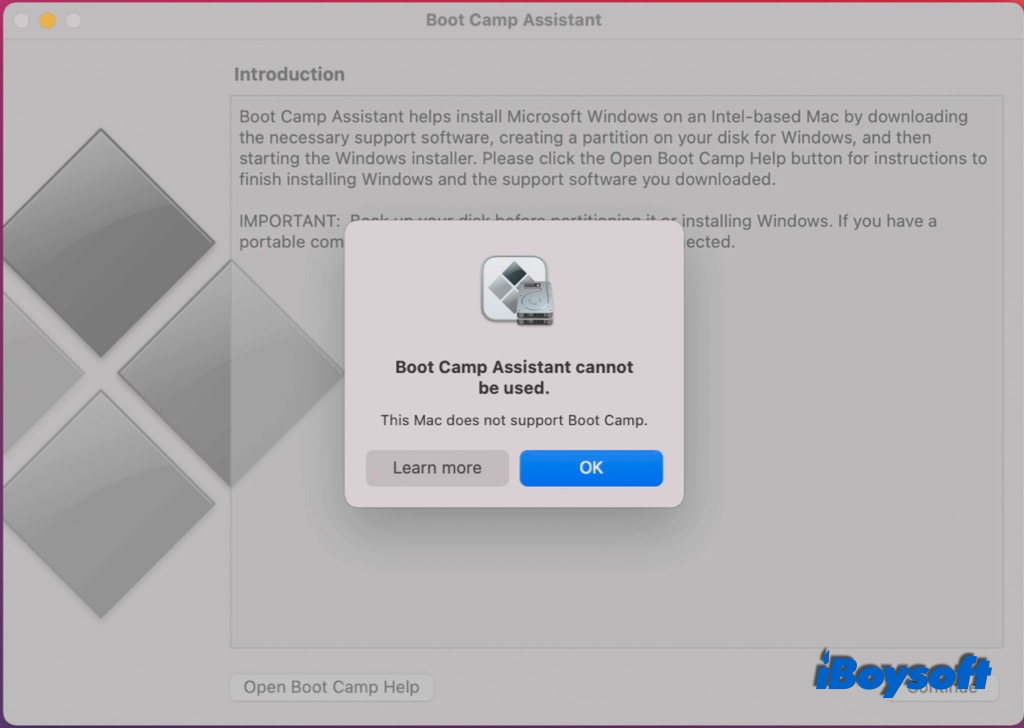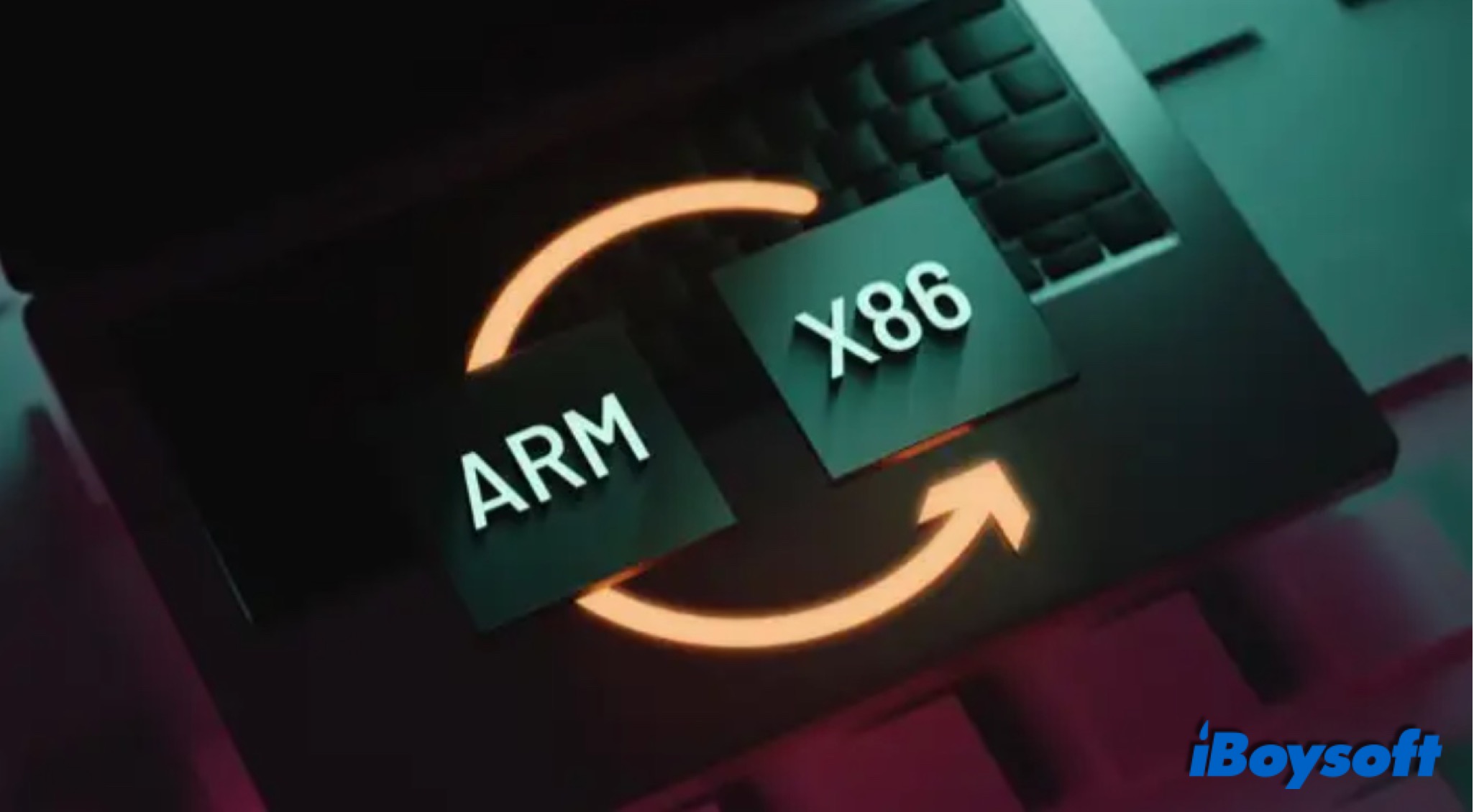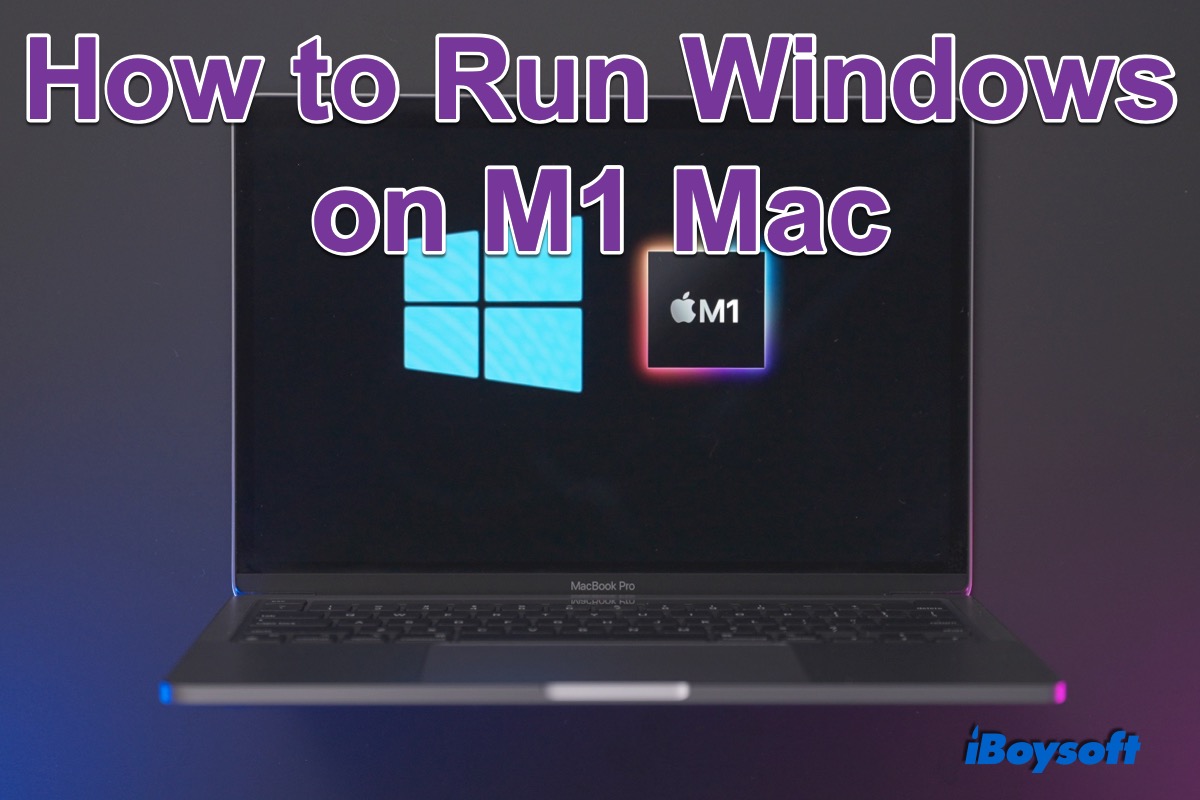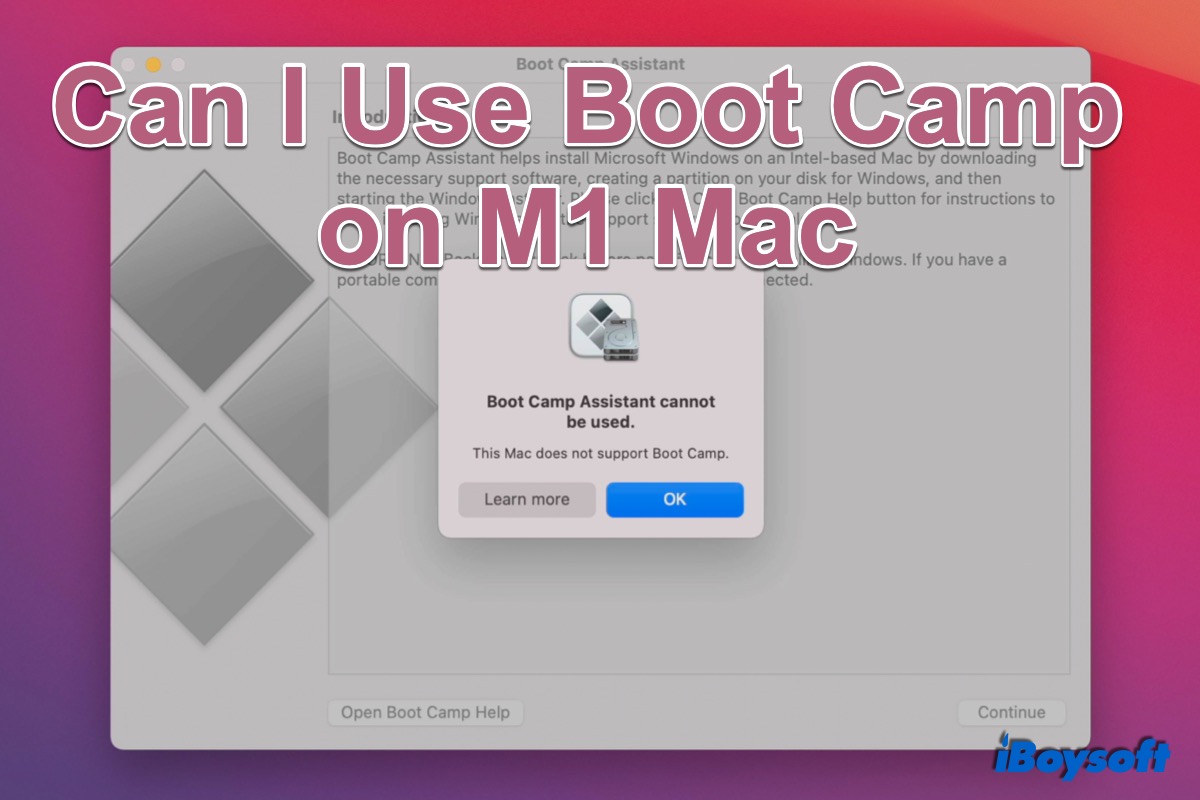For years, Apple has allowed Mac users to install Windows on Mac equipped with an Intel chip through Boot Camp Assistant, a free macOS utility. However, Apple has developed its own processor for Mac devices and released the first Apple Silicon Mac in late 2020, transitioning from Intel-based Macs to ARM-based Macs.
Significantly, M1 Mac improves performance and efficiency compared with the Intel Mac. But nothing is perfect. It causes headaches for some users because of compatibility issues. One of these is Windows installation on macOS.
Mac prompts "Boot Camp Assistant can not be used"
"One of the main reasons to buy a Mac is the Boot Camp Assistance. It allows me to switch from macOS to Windows OS. I bought an M1 MacBook 13 Pro and I bought a new Windows 10, the most expensive one. As I attempt to install Windows on the MacBook and click on the Icon of Boot Camp Assistance, it says "Boot Camp Assistant can not be used", so I'm Stuck with Windows 10 and have nowhere to install it, what a Bummer."
This is a comment from the Apple forum. And quite a few M1 Mac users have encountered the same problem that Boot Camp Assistant is unusable. Still others found that Apple thoroughly removed Boot Camp Assistant after upgrading to macOS Monterey.

The fact that Apple doesn't support installing Windows on ARM-based Macs is bad news for anyone who needs to run macOS and Windows on one Mac device. So if you buy a Mac with an M-series chip (M1, M1 Max, M1 Pro), you can't use Boot Camp Assistant to run Windows as you can on an Intel-based Mac.
Why M1 Mac doesn't support using Boot Camp
Boot Camp Assistant enables you to install a copy of x86 Windows 10 on Mac computers with an Intel processor. While, with the advent of the ARM processor on the new Apple silicon, it requires an ARM copy of Windows OS (an operating system compatible with the new system) to run Windows on Mac.

ARM VS. x86: What Notebook/Desktop Users Should Know
Which one is better, ARM or x86? This post explains what are ARM and x86 and the differences between ARM and x86. Read more >>
However, Microsoft hasn't licensed Windows ARM for sale. Craig Federighi, Apple's software engineering chief, previously said that Apple has the core technologies to be able to run the ARM version of Windows, but it is really up to Windows whether to license that tech for Mac users to run on Apple silicon Mac.
It is said that Qualcomm holds an ARM-exclusive arrangement with Microsoft to provide the processors to drive Windows on ARM, and the deal is set to expire very soon. This brings a slight chance to install Windows on an ARM-based Mac.
Is there any other way to run Windows on M1 Mac
Back to the Mac equipped with an Intel processor, the Boot Camp Assistant is not the only way you can run Windows on Mac. Actually, there are Windows virtual machines for Mac to run Windows OS and emulators to use Windows apps.
Companied with the introduction of the M1 Mac, Boot Camp Assistant becomes incompatible and the popular virtualization programs either have difficulty or simply don't easily run Windows on M1. But there are some Boot Camp alternatives you can use on an M1-powered Mac to meet your needs.
- The recent version 17 of Parallels Desktop enables you to download a preconfigured Windows 10 on M1 Mac.
- VMWare Fusion has released a trial version of its emulator that can run on M1 Macs, and the final version comes out in Spring 2022.
- Windows 365, technically a form of a virtual machine, runs programs in the cloud by using Microsoft's remote server.
- CrossOver 20 enables you to run Microsoft applications without installing Windows, but it is a little complicated for beginner users to use.

Tutorial on How to Run Windows OS & Apps on Apple Silicon Mac
This post explains whether you can run Windows on Apple silicon Mac, and it introduces how to run Windows on M1 Mac with different methods, including virtual machine, emulator, and cloud server. Read more >>
Final Words
It is hard to say whether Windows will come to M1 Mac in the future. Although Boot Camp Assistant is not available on ARM-based Mac, third-party software like Parallels Desktop and VMWare Fusion are excellent alternatives to running Windows on Mac.
